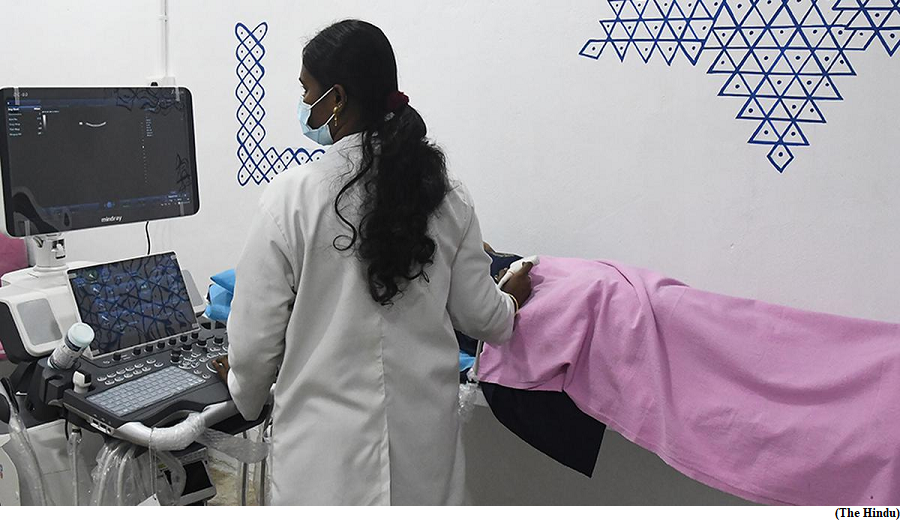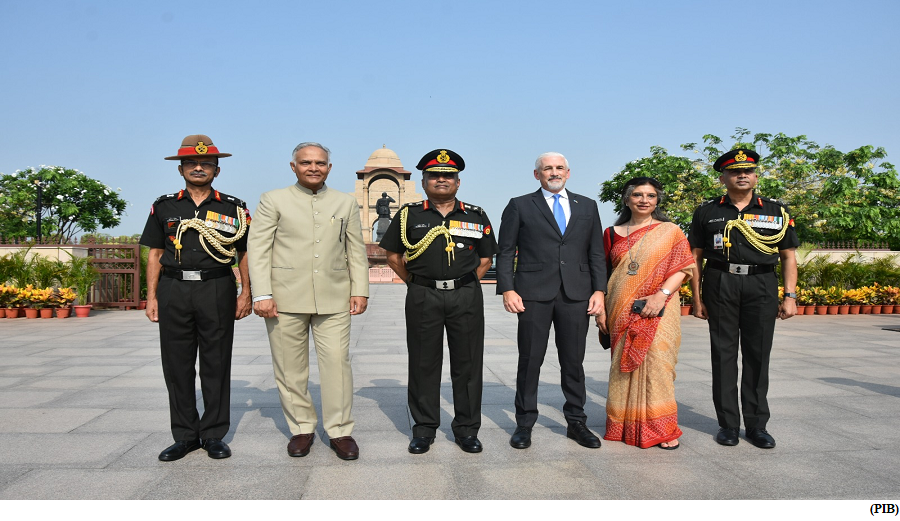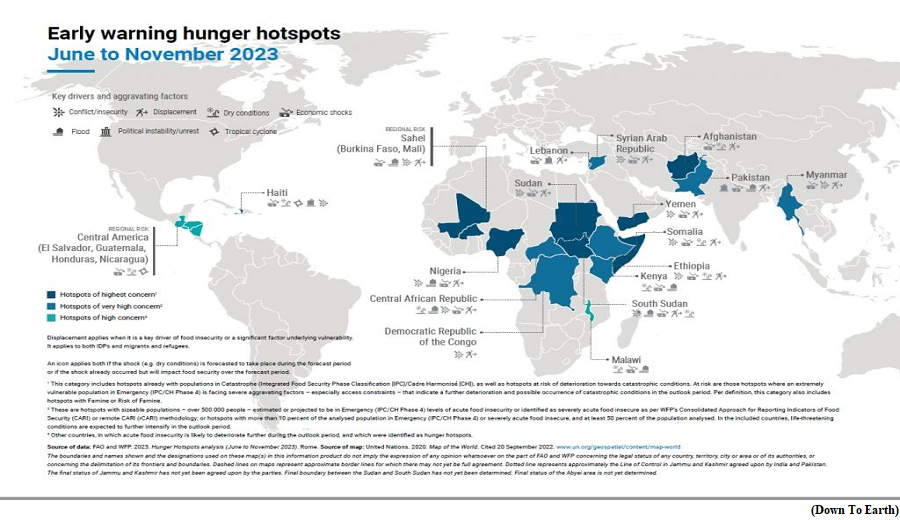What has India done to curb unnecessary hysterectomies? (GS Paper 2, Health)

Why in news?
- The Union Health Ministry recently urged State governments to audit hysterectomy trends in public and private hospitals, in response to a Supreme Court petition arguing that women from marginalised locations are at risk of unjustified hysterectomies for economic gains and exploitation.
- The Court also gave a three-month deadline to States, directing them to implement the guidelines previously issued by the Centre.
What are the criteria for getting a hysterectomy?
- The highest percentage of hysterectomies were to treat excessive menstrual bleeding or pain (51.8%); 24.94% for fibroids; 24.94% for cysts and 11.08% for uterine disorder or rupture, according to NFHS-5 data. Yet, studies have shown that “many of these causes were considered to be treatable and surgery could be avoided”.
- A majority of these cases were reported among socially and economically disadvantaged women.
- The procedure can easily be misused by either private clinics who earn profits (from insurance money) or by contractors in unorganised sectors such as the sugar-cane-cutting industry, where ‘wombless women’ are the norm to eliminate the need for menstrual care and hygiene among workers.
What measures has the govt. taken?
- The Union Health Ministry in 2022 issued guidelines to prevent unnecessary hysterectomies, listing possible indications of when hysterectomy may be required and alternative clinical treatments for gynaecological issues.
- Further, they recommended setting up district, State-level and national hysterectomy monitoring committees to monitor and collect data on age, mortality, and occupations, among other details.
- The monitoring committees are also tasked with creating awareness, among both practitioners and patients, about bodily anatomy, the role of uterus and when hysterectomies are actually indicated.
- A 2017 study from Gujarat found most women assumed that the uterus served no role outside of pregnancy and that removing the uterus would solve their health issues. There is a dearth of awareness, and in the absence of sexual and reproductive health education, “informed consent” to conduct the procedure can never be taken.
- The government’s flagship health insurance programme, the Ayushman Bharat Pradhan Mantri Jan Arogya Yojana provides health cover of ₹5 lakh for 1,949 procedures, including hysterectomies. The government has authorised 45,434 hospitals to conduct these operations.
Is there an implementation gap?
- The gap thrives in a culture where gynaecological care and disorders exist in oblivion, experts say.
- The Supreme Court and Centre’s reiteration of guidelines came in response to a petition by Dr. Narendra Gupta, a public health expert.
- He argued that despite the provisions, private hospitals in Bihar, Chhattisgarh and Rajasthan engaged in unethical practices, unnecessary procedures and did not inform women of side effects or take their informed consent.
- In doing so, they “failed in providing and regulating constitutionally mandated reproductive healthcare to women” and violated their “rights to health, bodily integrity and informed consent”.
Conclusion:
- Hysterectomies may cause long-term injuries and disabilities, requiring follow-up and post-operative care, both rarely available or affordable.
- In some cases, where hysterectomies are not justified yet still done, women may continue to suffer post-surgery and might need additional surgery.
- In other cases, patients may need medical support such as hormone replacement therapies. But these interventions are limited to private hospitals and remain unaffordable for low-income groups.
Indian Army celebrates 75th International Day of UN Peacekeepers
(GS Paper 2, International Organisation)
Why in news?
- Recently, the Indian Army commemorated the 75th International Day of UN Peacekeepers by paying homage to the fallen comrades by laying wreath at National War Memorial, New Delhi.
- On 29th May, 1948 the first UN peacekeeping mission, “UN Truce Supervision Organisation (UNTSO)” began operations in Palestine.

India’s contribution:
- India has a rich legacy of contribution to UN Peacekeeping operations and is one of the largest contributors of troops. It has contributed approximately 2,75,000 troops to peacekeeping missions so far, with around 5,900 troops currently deployed in 12 UN Missions.
- Indian Army personnel have operated under difficult conditions in challenging terrains and have displayed exemplary professionalism, humane approach, courage and valour, to the extent of making the supreme sacrifice to defend the UN mandates.
- 159 Indian Army soldiers have made the supreme sacrifice to ensure peace across the globe.
- Apart from the current deployment, India has pledged one Infantry Battalion Group and Corvette with Helicopter, as hard power and an Engineer Company & Signal Company as Force enablers, to be deployed at the behest of the UN.
Women Peacekeepers:
Centre for UN Peacekeeping (CUNPK):
- The Indian Army has established a Centre for UN Peacekeeping (CUNPK) in New Delhi to impart niche training in peacekeeping operations. The Centre trains more than 12,000 troops every year.
- CUNPK undertakes a multitude of activities from contingent training to national and international courses for potential peacekeepers and trainers. It also hosts foreign delegations as part of sharing best practices.
- The Centre regularly dispatches Mobile Training Teams to Friendly Foreign Countries as part of capacity building in the field of UN peacekeeping training. The institute has evolved in the two decades as a Centre of Excellence and repository of experience and best practices.
- In order to ensure the operational efficiency and sustainability of Indian contingents in UN missions, the Indian Army has deployed state-of-the-art equipment and vehicles. These vehicles and equipment are manufactured in India and have successfully withstood the vagaries of difficult terrain, weather and operational conditions in the mission areas.
Way Forward:
- India has been at the forefront of capacity development for the UN, host nations and partner nations.
- India continues to provide active support for host nation capacity development by providing training, infrastructure development and Civil-Military Co-operation (CIMIC) activities.
Pakistan, Afghanistan among global hunger hotspots, UN report
(GS Paper 2, International Organisation)
Why in news?
- Recently, new United Nations report titled, ‘Hunger Hotspots – FAO-WFP early warnings on acute food insecurity’ was released.
- It has found Pakistan, Afghanistan and Myanmar among the hunger hotspots in the world, warning of increasing acute food insecurity in several parts of the world.

Key Findings:
- Deepening economic shocks continue to drive low- and middle-income nations deeper into crisis and a likely El Nino climatic phenomenon is raising fears of climate extremes in vulnerable countries around the globe.
- Urgent humanitarian action is needed to save lives and livelihoods and prevent starvation and death in hotspots where acute hunger is at a high risk of worsening from June to November 2023.
- Acute food insecurity can potentially increase in magnitude and severity for 18 areas in 22 countries, according to the Food and Agriculture Organization of the United Nations (FAO) and the World Food Programme (WFP).
- Many hotspots are facing growing hunger crises, the report said, highlighting the worrying multiplier effect that simultaneous and overlapping shocks are having on acute food insecurity. Conflict, climate extremes and economic shocks continue to drive more and more communities into crisis.
Hotspots:
- Afghanistan, Nigeria, Somalia, South Sudan and Yemen remain at the highest concern level. Haiti, the Sahel (Burkina Faso and Mali) and Sudan have been elevated to the highest concern levels.
- These countries have populations facing or projected to face starvation or are at risk of deterioration towards catastrophic conditions, given they already have critical food insecurity and are facing severe aggravating factors. These countries require the most urgent attention.
- Pakistan, the Central African Republic, Ethiopia, Kenya, the Democratic Republic of the Congo and the Syrian Arab Republic are hotspots with very high concern. The warning is also extended to Myanmar.
- These hotspots have many people facing critical acute food insecurity, coupled with worsening drivers that are expected to intensify life‑threatening conditions in the coming months.
- Lebanon, El Salvador and Nicaragua have also been added to the list of hunger hotspot countries, since the September 2022 edition of the report. Malawi, Guatemala and Honduras remain hunger hotspot countries.
New emerging conflicts:
- New emerging conflicts, in particular the eruption of conflict in Sudan, will likely drive global conflict trends and impact several neighbouring countries.
- The spillover from the crisis in Sudan is driving massive population displacement and hunger among people forced from their homes in search of refuge and those hosting them.
- More than one million people are expected to flee the country, while an additional 2.5 million inside the country set to face acute hunger in coming months.
- The Sudan was already hosting over one million refugees and if the conflict persists, hundreds of thousands are likely to return to their counties of origin.
- Many of these countries are already in the grips of underfunded and protracted refugee crises, compounded by social, political and economic stressors.




